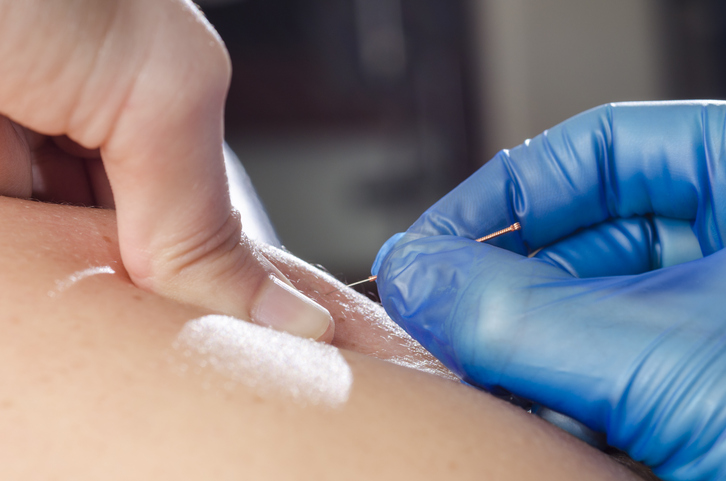Treatments
What Is Dry Needling?

Dry needling is a treatment in which fine needles are inserted into the skin in order to help relieve pain. The needles do not inject any type of fluid into the body, which is why the treatment is called “dry.” The needles are typically inserted into knotted, painful areas of muscles known as trigger points. Dry needling stimulates tissue in order to release knots and stop spasms. It may also improve flexibility and increase range of motion.
What does a dry needling session involve?
During a dry needling session, a trained practitioner, such as a physical therapist or chiropractor, inserts one or more needles into the skin. The muscle may twitch when a needle is inserted, which is a good indicator that the muscle is reacting to the needle. Needles can be left in place for a few seconds to 15 minutes. Some pain or aching may be experienced while the needles are in place. Some individuals may experience relief immediately after the session. Others may need more than one session to feel any relief.
What health conditions can benefit from dry needling?
Dry needling is most often used to treat muscle or joint pain. However, it can also be used to help treat various health conditions:
- Disc or spine problems
- Migraine or tension headaches
- Mouth or jaw problems, including temporomandibular disorders (TMD)
- Whiplash
- Repetitive motion disorders, such as carpal tunnel syndrome
What are the potential side effects of dry needling?
The most common side effects of dry needling include bleeding, bruising, and temporary soreness. Some individuals may experience fatigue after a dry needling session. Infection may develop if unsterile needles were used. Women who are pregnant, people who take blood-thinning medications, and people who are recovering from surgery may not be good candidates for dry needling. A health care professional should be consulted before trying dry needling.

















